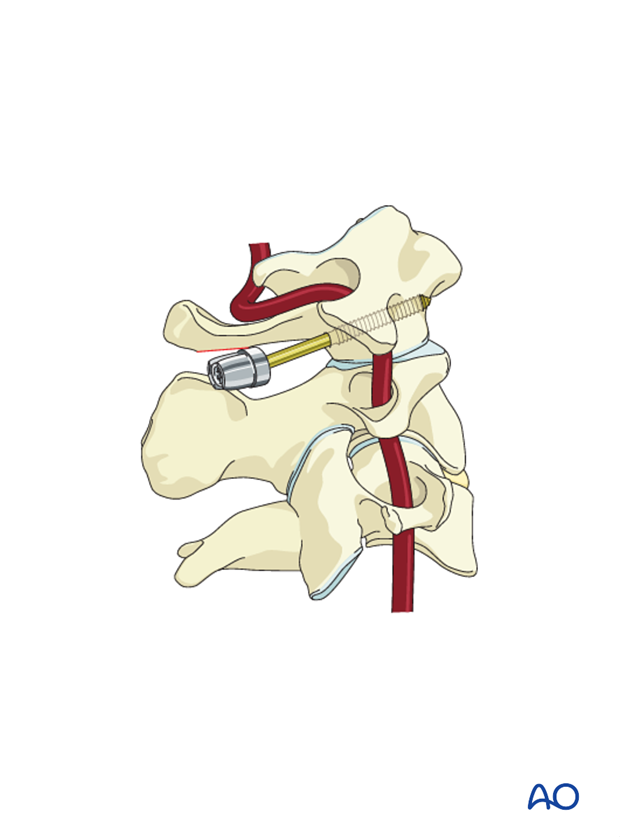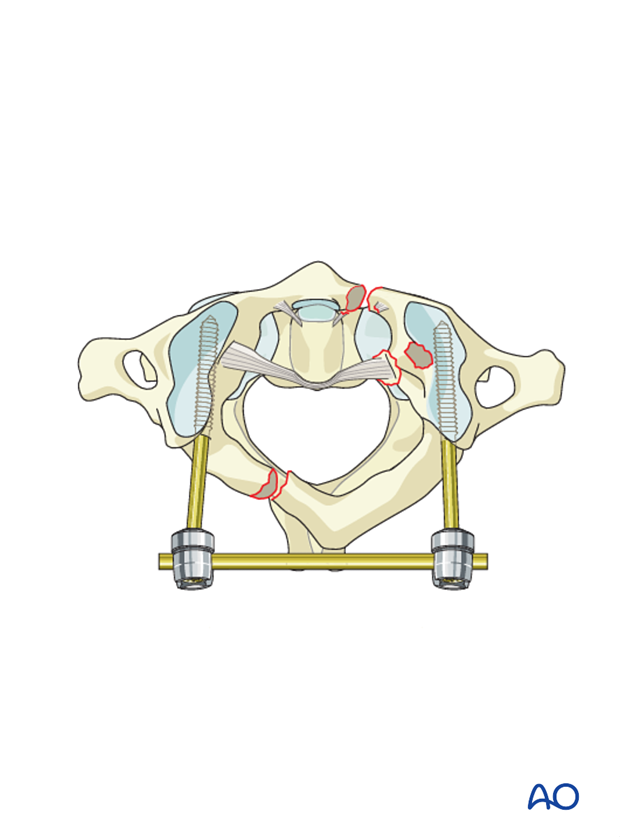C1 lateral mass osteosynthesis
1. Introduction
Lateral mass osteosynthesis may be performed for C1 ring Type B fractures.
To avoid joint fusion C1–C2 or Occ–C2, a direct approach can be performed, stabilizing the lateral masses.

2. Approach and positioning
This procedure is performed through a posterior approach with the patient placed in the prone position.

3. Screw insertion
Lateral mass screws are inserted bilaterally according to standard procedure.
The lateral masses may be more mobile than in an intact arch. The use of clamps or other types of support may be necessary to prevent movement of the lateral mass during screw insertion.

4. Reduction
The screw extensions are used as joysticks to reduce the fracture.

Once satisfactory reduction is achieved, a connecting rod is installed between the screws to secure the reduction.

Slight compression is applied to ensure anatomical reduction.

5. Fixation
Screws are tightened to secure the reduction.

6. Aftercare
Patients are made to sit up in bed in the evening after the operation.
A collar is commonly used following surgical stabilization to moderate patient activity.
The purpose of a collar is to prevent range of motion outside of limits deemed favorable for fracture healing. The collar is optional.
Patients with intact neurological status are made to stand and walk on the first day after surgery. Patients can be discharged when medically stable or sent to a rehabilitation center if further care is necessary. This depends on the comfort levels and presence of other associated injuries.
Patients are generally followed with periodical x-rays at 6 weeks, 3 months, 6 months, and 1 year.













